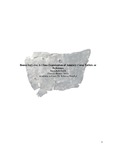Bound by Love: A Close-Examination of Amatory Curse Tablets or Defixiones (thesis)

View/
Author
Smith, Mary Elizabeth (Mary Beth)
Subject
Washington and Lee University -- Honors in Classics
Tablets (Paleography)
Blessing and cursing
Inscriptions
Metadata
Show full item recordDescription
Thesis; [FULL-TEXT FREELY AVAILABLE ONLINE] Mary Elizabeth (Mary Beth) Smith is a member of the Class of 2016 of Washington and Lee University. Curse tablets display a particular prevalence throughout the Greco-Roman world. The earliest known tablets from classical antiquity were written in Greek and discovered in Selinus, Sicily, likely dating from the early 5th century B.C.2 The practice and tradition of curse tablets as a form of acheiving one's goal persisted until the 7th or 8th century AD. While a majority of the tablets were written in Greek, many were written in Latin or a mixture of Latin and Greek. Of the 1600 known tablets discovered so far, approximately 1100 were written in the Greek language. They are identified as . . . meaning to "tie up" or "bind down." Similarly, the word defixio, which derives from the verb "defixere" is the Latin word, meaning "to fix" or "to fasten," that is associated with ancient curse tablets. Mary Beth Smith